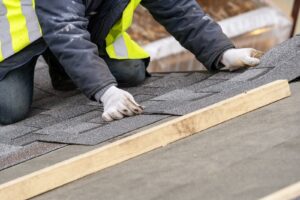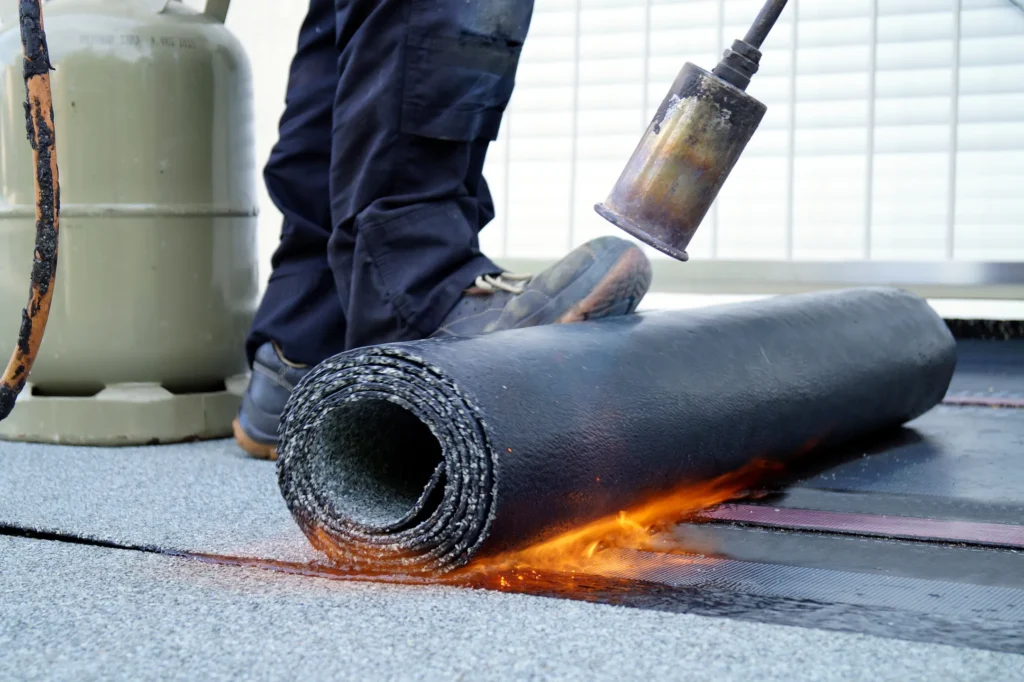Introduction
Roofing felt is a crucial component in modern roofing systems, providing an additional layer of protection between the roof deck and the outer roofing material. This underlayment is commonly used in residential and commercial buildings to enhance durability, prevent moisture infiltration, and improve overall roof longevity.
In this article, we will explore everything you need to know about roofing felt, including its types, benefits, installation process, maintenance, and comparisons with other underlayment materials.
What is Roofing Felt?
Roofing felt, also known as tar paper or underlayment, is a waterproofing barrier placed beneath shingles or other roofing materials. It is typically made from a base of either natural fibers (wood cellulose) or synthetic materials (polyester or fiberglass) that are impregnated with bitumen (asphalt) to enhance waterproofing properties.
Roofing felt serves as an added layer of protection against weather elements, preventing water, snow, and ice from seeping into the roof deck and causing damage. It is widely used in sloped roofs and works as a temporary waterproofing layer during construction before the final roofing material is installed.
Types of Roofing Felt
There are different types of roofing felt available in the market, categorized mainly by weight and composition. The two primary types of roofing felt are:
1. Organic Roofing Felt
- Made from natural materials such as wood cellulose, recycled paper, or rags that are saturated with asphalt.
- Offers good water resistance but can deteriorate over time due to exposure to moisture.
- Heavier and thicker than synthetic options, providing better protection against leaks.
- Less commonly used today due to advancements in synthetic underlayments.

2. Synthetic Roofing Felt
- Made from polyester or fiberglass and coated with asphalt for added durability.
- More resistant to tearing, moisture, and UV exposure compared to organic felt.
- Lightweight and easier to install.
- Provides better longevity and is preferred in modern roofing applications.
Roofing felt is also classified based on weight, with 15-pound (15 lb) and 30-pound (30 lb) felt being the most common. The 30-pound felt is thicker and more durable, offering better protection, while the 15-pound felt is lighter and easier to handle.
Benefits of Roofing Felt
Using roofing felt in a roofing system offers numerous advantages, including:
1. Waterproofing Protection
Roofing felt acts as a barrier against moisture, preventing leaks and water damage to the underlying structure.
2. Improved Roof Longevity
By protecting the roof deck from moisture, roofing felt helps extend the lifespan of the roof.
3. Temporary Waterproofing
During construction, roofing felt provides a temporary waterproof covering before shingles or other materials are installed.
4. Enhanced Fire Resistance
Some types of roofing felt have fire-resistant properties, adding an extra layer of safety.
5. Better Shingle Adhesion
Roofing felt creates a uniform surface for shingles, improving their adhesion and overall performance.
6. Protection Against Ice Dams
In colder climates, roofing felt prevents ice dams from causing water to seep into the roof deck.
Installation Process of Roofing Felt
Proper installation of roofing felt is essential to ensure its effectiveness. Here is a step-by-step guide to installing roofing felt:
Step 1: Prepare the Roof Deck
Ensure the roof deck is clean, dry, and free of debris before installing the felt. Any damaged or rotted wood should be repaired or replaced.

Step 2: Roll Out the Felt
Start at the bottom edge of the roof and roll out the first layer of roofing felt horizontally. Align it properly, ensuring it hangs over the roof edge by about half an inch.
Step 3: Secure the Felt
Use roofing nails or staples to secure the felt, placing them every 12 to 18 inches along the edges and in the middle of the roll. Avoid leaving gaps or loose sections.
Step 4: Overlapping the Layers
Each successive layer should overlap the previous one by at least 2 inches on the sides and 4 inches at the top. This ensures proper water drainage and prevents leaks.
Step 5: Trim and Finish
Trim any excess felt using a utility knife and secure all edges properly. If additional waterproofing is needed, seal the overlaps with roofing cement.
Maintenance and Lifespan
While roofing felt is durable, proper maintenance is necessary to extend its lifespan and ensure its effectiveness. Here are some key maintenance tips:
- Regular Roof Inspections: Inspect the roof periodically for any signs of damage, such as tears or curling edges.
- Prompt Repairs: If the roofing felt is exposed due to missing shingles, repair or replace the affected area immediately.
- Keep the Roof Clean: Remove debris such as leaves and branches to prevent water buildup.
- Ensure Proper Ventilation: Adequate roof ventilation prevents moisture buildup and extends the life of the underlayment.
The lifespan of roofing felt depends on factors such as climate, exposure, and maintenance. On average, organic felt lasts 10-15 years, while synthetic felt can last 20 years or more due to its enhanced durability.
Roofing Felt vs. Other Underlayment Materials
Roofing felt is not the only underlayment option available. Here’s how it compares to other common materials:
| Feature | Roofing Felt | Synthetic Underlayment | Rubberized Asphalt |
|---|---|---|---|
| Material | Organic or synthetic fibers with asphalt | Polymer-based materials | Asphalt with rubber components |
| Durability | Moderate | High | Very High |
| Water Resistance | Good | Excellent | Superior (Self-adhesive) |
| UV Resistance | Low | High | High |
| Cost | Affordable | More expensive | Most expensive |
Synthetic underlayment and rubberized asphalt offer better durability and waterproofing than traditional felt but come at a higher cost. Roofing felt remains a cost-effective and reliable choice for many homeowners.
Conclusion
Roofing felt is an essential component in roofing systems, providing an added layer of protection against moisture and weather damage. Whether using organic or synthetic felt, this underlayment enhances roof longevity, prevents leaks, and improves overall durability.
When choosing roofing felt, consider factors such as climate, budget, and long-term performance. Proper installation and maintenance will ensure the effectiveness of the roofing felt, keeping your home protected for years to come.
For homeowners and contractors, investing in quality roofing felt is a wise decision to safeguard the integrity of a roofing system.
